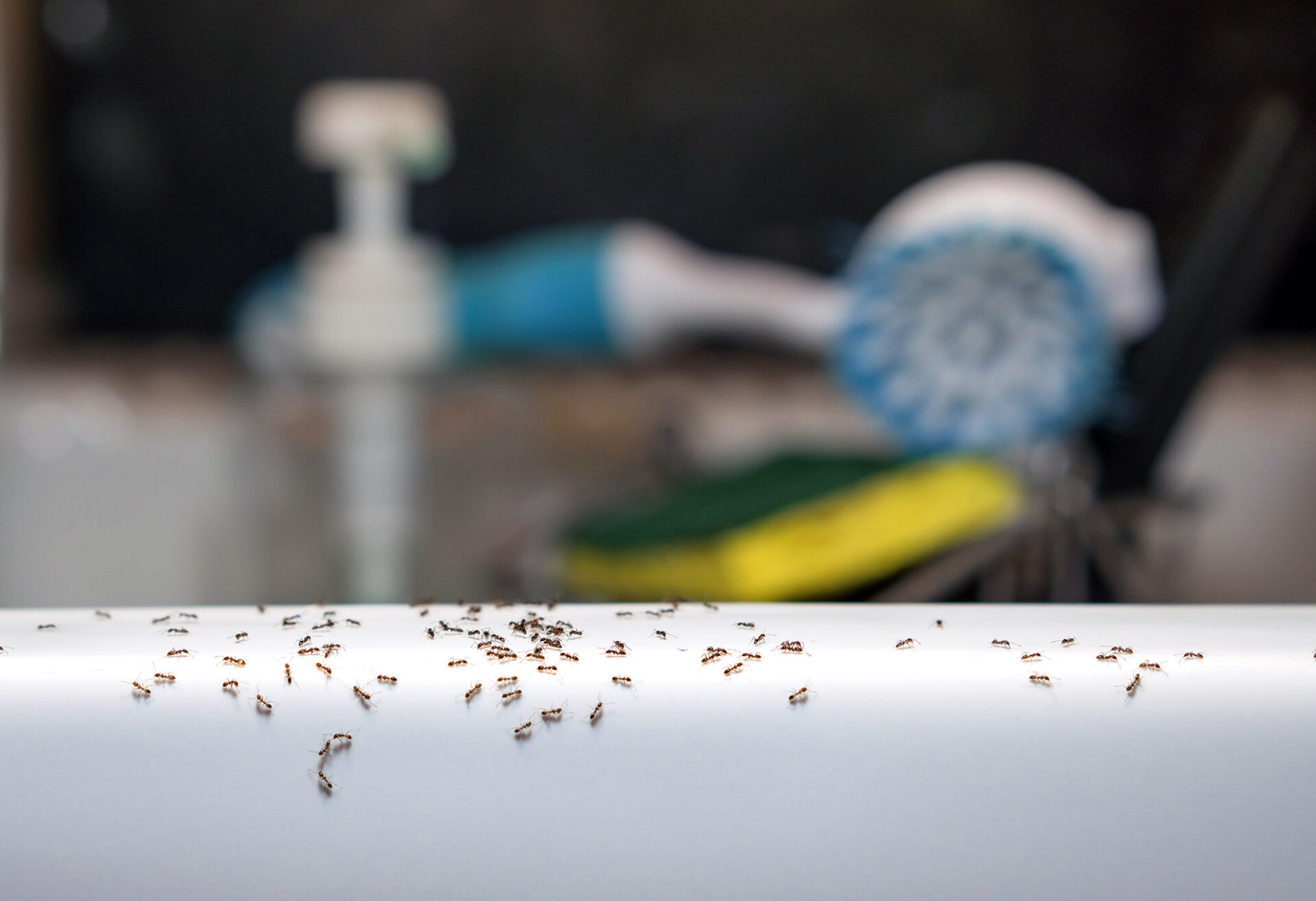Understanding Little Black Ants: Little Black Ants In My Bathroom

Little black ants, often found in bathrooms, are a common household pest. These tiny insects are typically identified by their dark brown to black color, with a body length ranging from 1/16 to 1/8 inch. They are known for their quick movements and ability to form large colonies.
Nesting Habits, Little black ants in my bathroom
Little black ants are known for establishing their nests in a variety of locations, often in sheltered and humid areas. Bathrooms, with their moist environments and potential food sources, provide ideal nesting grounds. They build their nests in cracks and crevices, under sinks, behind toilets, and even within walls.
Diet and Food Sources
These ants are omnivores, feeding on a wide range of food sources. Their diet consists of:
- Sweet substances: Sugary spills, crumbs, and even leftover toothpaste can attract these ants.
- Grease and fats: Oils and grease from cooking, soap residue, and even hair products can serve as food sources.
- Dead insects: They are scavengers and will readily consume dead insects, contributing to the ecosystem’s balance.
- Pet food: Leftover pet food, especially wet food, can be a significant attractant.
Attraction to Bathrooms
Bathrooms, with their combination of moisture, food sources, and shelter, create an ideal environment for little black ants. The following factors contribute to their presence in bathrooms:
- Moisture: Bathrooms are inherently moist environments due to showers, baths, and humidity. This moisture provides a suitable habitat for ant colonies.
- Food sources: As mentioned earlier, bathrooms often contain various food sources, such as spills, crumbs, and leftover toothpaste, attracting ants.
- Shelter: The cracks and crevices in bathroom tiles, under sinks, and behind toilets offer excellent nesting locations, providing protection from predators and the elements.
Effective Control Measures

Ants in your bathroom can be a nuisance, but they’re often a sign of a bigger problem – moisture. Before you start tackling the ants, you need to identify and address the source of the moisture. This might involve fixing leaks, improving ventilation, or making sure your bathroom is properly sealed. Once you’ve taken care of the moisture issue, you can move on to controlling the ants.
Eliminating Little Black Ants in Bathrooms
The best way to eliminate little black ants in bathrooms is to use a multi-pronged approach. This involves both preventative measures and active control methods.
- Identify entry points: Ants are resourceful and will find even the smallest cracks and crevices to enter your bathroom. Carefully inspect the bathroom, looking for any potential entry points, such as gaps around pipes, cracks in the floor, or openings around windows and doors. Seal these entry points using caulk, sealant, or weather stripping.
- Clean up food sources: Ants are attracted to food crumbs and spills, so it’s essential to keep your bathroom clean and free of food debris. Wipe down counters and sinks regularly, and make sure to clean up any spills immediately.
- Eliminate moisture sources: Ants thrive in damp environments, so reducing moisture is crucial. Make sure your bathroom is well-ventilated, and fix any leaks promptly. Consider using a dehumidifier if necessary.
- Use ant baits: Ant baits are effective in eliminating ant colonies because they work by targeting the queen. Place ant baits near areas where you’ve seen ants, and follow the instructions on the product label carefully.
- Apply ant sprays: Ant sprays can be used to kill ants on contact, but they are not as effective as baits in eliminating entire colonies. Spray ant sprays directly on ant trails and in areas where you’ve seen ants.
- Use borax: Borax is a natural insecticide that can be used to control ants. Mix borax with sugar or honey to create a bait, and place it near areas where you’ve seen ants. Be careful when using borax around children and pets, as it can be toxic if ingested.
Natural Remedies and DIY Solutions
If you prefer to avoid using commercial ant control products, there are a few natural remedies and DIY solutions you can try:
- Peppermint oil: Ants dislike the strong scent of peppermint oil. Mix a few drops of peppermint oil with water and spray it on ant trails and in areas where you’ve seen ants.
- Citrus peels: The scent of citrus peels can also deter ants. Place citrus peels around your bathroom, especially near areas where you’ve seen ants.
- Diatomaceous earth: Diatomaceous earth is a natural insecticide made from fossilized algae. It works by dehydrating ants. Sprinkle diatomaceous earth around areas where you’ve seen ants, but be careful when using it around children and pets.
Commercially Available Ant Traps and Sprays
A variety of commercially available ant traps and sprays are available. Here is a comparison of some popular options:
| Product | Type | Pros | Cons |
|---|---|---|---|
| Terro Liquid Ant Bait | Bait | Effective in eliminating entire colonies, easy to use | Can be messy, may attract other insects |
| Raid Ant & Roach Killer | Spray | Kills ants on contact, quick results | Not as effective as baits in eliminating entire colonies, can be harmful to pets |
| Combat Ant Killing Gel | Bait | Effective in eliminating entire colonies, easy to use, safe for pets | May not be as effective as liquid baits, can be messy |
